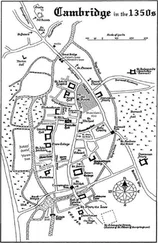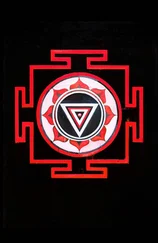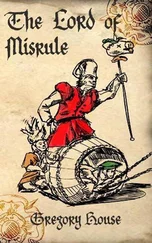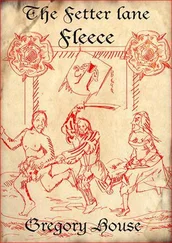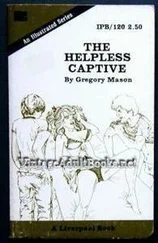And so Cathy cried herself to sleep with thoughts of Michael Wenick-a nagging voice in the back of her mind that wondered if The Michelangelo Killer hadn’t also read the article; a voice that at the same time taunted her with, “See? He was right!” even as it cried, “Shame on you, World! Shame on you for not seeing the satyr behind the Bacchus!” But Cathy did see the satyr-could not think of the Wenicks sitting in St. Mark’s Church without seeing that distorted face, that ghoulish smile munching on the stolen grapes. Yes, Cathy saw the satyr all too well -saw it floating next to her in the darkness of the Polks’ guest room as clearly if she had crawled inside Michael Wenick’s coffin with a flashlight.
It was just after midnight when Cathy awoke with a start. She had been dreaming of her mother-her heart still pounding from the chase down the street, from her close call with the van.
Mom was supposed to pick me up at school, Cathy thought. But she drove right past me in that strange, long black car. Somebody else was driving-she screamed to me out the window. I tried to run after her-ran out into traffic. But my legs were too heavy. Would have gotten killed by that van if I didn’t wake up.
For as often as she thought of her mother, for as much as she missed her mother, Cathy rarely dreamt of her mother. And more than she feared those memories of her encounter with The Michelangelo Killer’s Bacchus down at Watch Hill-memories that for two weeks now had been her constant companion in the dark at bedtime-Cathy was so disturbed by the strangeness of her nightmare that she turned on the light.
Cathy’s eyes landed on her copy of Slumbering in the Stone on the nightstand. Her dream quickly evaporating, the residue of her fear, however, remained. And for reasons Cathy Hildebrant would never quite understand, she instinctively opened Slumbering in the Stone to a page she had dog-eared the night before-just one of the many she had marked with the hopes of later finding a key into The Michelangelo Killer’s mind.
The photograph at the top of the page was a detail of Michelangelo’s Night, one of six marble figures the artist carved from 1520-1534 for the Medici Chapel in the Church of San Lorenzo, Florence -for the tombs of Dukes Giuliano and Lorenzo de’Medici specifically. The two marble façades were almost identical in their conception-each with an idealized marble statue of the Medici duke seated in a shallow niche above the sarcophagus that contained his remains. Two nude allegorical figures reclined on each of the curved sarcophagi lids-Night and Day for Giuliano, Dusk and Dawn for Lorenzo. The text to which Cathy had unconsciously turned read as follows:
With regard to Night specifically, scholars have long pondered over the unusual shape of the figure’s left breast. As I mentioned previously in our discussion of the proportional ratios in the Rome Pietà, art historians-and more recently, even plastic surgeons-have long argued that the execution of Night ’s left breast once again reflects the artist’s supposed unconcern or unfamiliarity with the nude female figure. True, as in all of Michelangelo’s females, the breasts are misshapen and awkwardly “slapped onto” an undeniably masculine torso. However-even though there is a consensus amongst modern scholars that the unusual appearance of Night ’s left breast is intentional and not a result of an aesthetic error or the statue’s slightly unfinished state-in a recent study of the figure, an oncologist with the Cancer Treatment Centers of America found in Night ’s left breast three abnormalities associated with locally advanced breast cancer: a large bulge to the breast contour medial to the nipple; a swollen nipple-areola complex; and an area of skin retraction just lateral to the nipple-all of which indicate a tumor just medial to the nipple.
As the noted oncologist accurately points out, these abnormalities do not appear in the right breast of Night or in the companion figure of Dawn -or in any other of Michelangelo’s female figures for that matter. Hence, the evidence strongly suggests that Michelangelo used for his model a woman-dead or alive-with advanced breast cancer, and thus accurately reproduced the physical anomalies in marble.
Yet, despite the detail of the diseased breast itself, curiously, once again we see both breasts awkwardly joined with a masculine frame-as if Michelangelo’s understanding of the female could go no further than a narrow and objective appraisal of the “parts” which differentiate the two sexes, but could never quite grasp how those parts worked together within the whole. Then again, there is the theory that Michelangelo might have intentionally sculpted his female figures as such-masculine with female parts-simply because, as we discussed earlier, he viewed the male body as aesthetically superior.
Nevertheless, given that Michelangelo depicted lumps in only one of the four naked breasts that adorn the Medici Chapel-and given that Night , the “darkest” and most allegorically ominous of all the figures, should be the one depicted with the ravaging disease-there can be no doubt that Michelangelo not only recognized the lump as not just an aesthetic anomaly, but also intentionally sculpted Night ’s “disease of the breasts”-a disease during the Renaissance which was thought to have been caused by an excess of black bile-as just one of the many subtle details that comprise the metaphorical statement of the façade as a whole. However, the degree to which Michelangelo understood the disease as a form of cancer-that is, if he understood the reason behind the lumpy breast in a context other than traditional Renaissance “humor-based” medicine-is still open for debate.
Against the collage of disjointed images that had been her dream, Cathy sat up in the Polks’ guest bed searching the photograph of Night for a long time. She remembered vividly the circumstances surrounding the picture-a picture she had snapped on her old Nikon while still a graduate student at Harvard. At the time she had never thought she would use it for a book, let alone in such a prophetic context with regard to the disease that murdered her mother. Indeed, it was on the very afternoon that Cathy dropped off the film of Night at the photo lab in Florence that her mother dropped the terrible news over the telephone.
“I don’t want you to worry, Cat,” Kyon Kim had said. “We Korean women are strong. I’m gonna be just fine.”
More than the pain her memories brought with them, more than the wicked irony of the chapter she had written while her mother was undergoing treatment in Boston, which since had become an inadvertent testament to her as well, Cathy could not shake the terrible feeling that something beyond her dream-something that went much deeper than the lasting image of her mother screaming as the long black car raced past Eden Park Elementary School-had compelled her to turn to the section on Night and breast cancer.
“Yes, Dr. Freud,” Cathy said aloud. “I see the blatant symbolism. The long black car is cancer. The long black car belongs to Mr. Death. He’s the driver I can’t see-my mother sitting in the passenger seat beside him as he whisks her away. I don’t want him to take her.”
But the statue of Night, replied a voice in her head. Your compulsion to turn to the photograph taken on the very same day your mother told you she had breast cancer. Quite a coincidence, wasn’t that, Cat? But you didn’t make the connection back then, did you? Back in Florence? Only years later when you were working on your book-when your mother had already taken a turn for the worse-did you realize the irony of that day. Almost as if the gods were trying to warn you back then, Cathy-but you were incapable of hearing them.
Читать дальше

